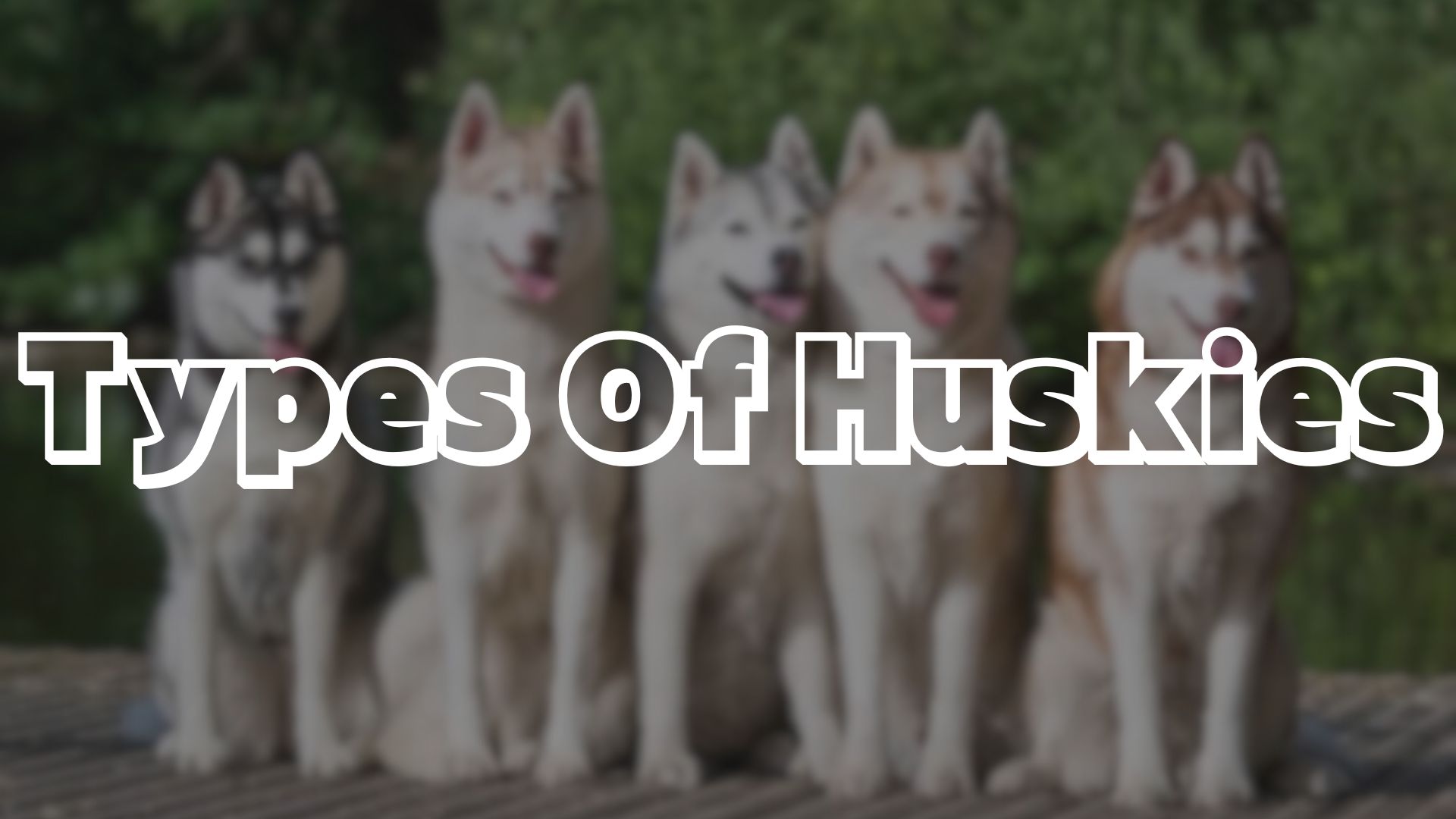Explore an array of distinctive Husky breeds, from the affectionate Siberian Husky to the formidable Alaskan Malamute and the high-performance Alaskan Husky. Each type offers unique traits and characteristics suited to different preferences and lifestyles. Discover more about these fascinating breeds and their origins, temperaments, and care requirements.
Siberian Husky
Siberian Huskies, known for their affectionate nature and medium build, are a breed originally bred by the Chukchi people for sled-pulling purposes. Weighing between 35 to 60 pounds and standing 20-23 inches tall, these quirky and vocal dogs require experienced handlers due to their independent and stubborn tendencies.
Sporting a thick double coat to protect against cold climates, Siberian Huskies need ample exercise to prevent boredom and destructive behavior. Their love for humans and other animals highlights their friendly demeanor, but their independence calls for consistent training. Not suitable for first-time owners, Siberian Huskies thrive under assertive leadership and mental stimulation.
Their origin as sled dogs reflects in their endurance and energy levels, making them ideal companions for active individuals who can provide the necessary physical and mental challenges these intelligent canines crave. Overall, Siberian Huskies embody a blend of affection, athleticism, and spirited personalities that make them a beloved breed for those well-equipped to meet their unique needs.
Alaskan Malamute
A stalwart presence in the realm of Arctic canines, the Alaskan Malamute commands reverence for its formidable size and storied heritage. Weighing between 75 and 100 pounds and standing 23-26 inches tall, these dogs are larger and more robust than their Siberian Husky counterparts. Originating from the region around Alaska, Alaskan Malamutes are one of the oldest Arctic sled dog breeds. Renowned for their strength and endurance, they were historically used for hunting, towing, and guarding tasks. While they can be trained as guard dogs due to their protective nature, they are known to be more aggressive towards other animals, requiring assertive owners with experience.
These dogs necessitate a high-protein diet to support their active lifestyle. Socialization is crucial from an early age to prevent aggression towards other dogs. Due to their strong-willed nature, Alaskan Malamutes are not recommended for first-time dog owners. Their impressive size, coupled with their loyalty and playfulness, makes them a cherished companion for those who can handle their needs effectively.
Alaskan Husky
The Alaskan Husky, a versatile sled dog type, is recognized for its exceptional performance abilities rather than its appearance. Bred specifically for their speed, endurance, and work ethic, Alaskan Huskies are commonly used in racing and long-distance events due to their unmatched stamina and drive. These dogs are not a purebred but rather a mix of various Northern breeds selected for their working qualities, making them highly prized in competitive mushing circles.
| Alaskan Husky | |||
|---|---|---|---|
| Height | 23-26 inches | Weight | 35-60 pounds |
| Life Expectancy | 10-15 years | Coat and Color | Varied colors |
| Characteristics | Endurance | Cheerful | Intelligent |
Alaskan Huskies require regular exercise and mental stimulation to keep them happy and content. They are known for their friendly and sociable nature, often forming strong bonds with their handlers. Due to their high energy levels and innate drive to work, these dogs thrive in environments where they can put their skills to good use.
Canadian Eskimo Dog
Indigenous to the Arctic region, the Canadian Eskimo Dog is a rare and endangered breed known for its strength, energy, and protective nature. Historically used for hunting and pulling sleds, these dogs exhibit a powerful build, standing between 18-28 inches tall and weighing 40-88 pounds. Their double coat comes in various colors and requires regular grooming to maintain its insulating properties.
Canadian Eskimo Dogs are intelligent and require experienced handling to channel their energy effectively. They thrive on mental stimulation and physical exercise to prevent boredom and behavioral issues. Due to their protective instincts, they make loyal companions but need early socialization to interact well with strangers and other animals.
Given their endangered status, efforts to preserve and protect the Canadian Eskimo Dog breed are crucial. With proper care, training, and respect for their heritage, these remarkable dogs can continue to showcase their resilience and strength in the modern world.
Miniature Husky
We will delve into the characteristics and traits of the Miniature Husky breed.
- Size:
- Miniature Huskies typically stand between 12-16 inches tall and weigh around 15-35 pounds. This smaller size makes them more suitable for apartment living compared to their larger counterparts.
- Lifespan:
- With proper care and a healthy lifestyle, Miniature Huskies can live between 12 to 15 years. Regular exercise, a balanced diet, and routine veterinary check-ups are essential for their well-being.
- Temperament:
- Miniature Huskies are known for being lively and social dogs. They enjoy being around people and are generally good with families. However, they may be reserved around strangers and require early socialization to ensure they grow up to be well-rounded pets. Additionally, they have high energy levels and need both mental and physical stimulation to prevent boredom and potential behavioral issues.
Greenland Dog
Originating from Greenland, the Greenland Dog is a large and hardy working breed known for its strength and loyalty. These dogs were traditionally used for sled pulling and hunting in the harsh Arctic conditions of Greenland. They are robust and independent dogs with a strong prey drive, making them excellent working companions. Greenland Dogs have a thick double coat that provides insulation against the cold, allowing them to thrive in frigid climates.
Known for their endurance and resilience, Greenland Dogs require firm training and socialization from an early age due to their strong-willed nature. They are loyal and protective of their families, making them excellent guard dogs. With a life expectancy of 12-14 years, these dogs are best suited for experienced owners who can provide them with the physical and mental stimulation they need to stay happy and healthy. Greenland Dogs excel in activities that challenge their physical abilities, such as sledding or agility training.
Labrador Husky
The Labrador Husky, a breed originating from Labrador, Canada, is known for its large size and friendly demeanor. These dogs are not true Huskies but share some characteristics with the Siberian and Alaskan Huskies.
- Physical Attributes:
- Labrador Huskies are large dogs, weighing up to 100 pounds and standing tall. They have a strong and athletic build, well-suited for pulling sleds and enduring harsh climates.
- Temperament:
- Known for their friendly nature, Labrador Huskies are sociable and enjoy being around people. They are loyal and make excellent companions for active individuals or families.
- Special Needs:
- Due to their high energy levels and prey drive, Labrador Huskies require ample exercise and mental stimulation to prevent boredom and destructive behaviors. Families with cats may find them unsuitable due to their strong prey instincts.
Labrador Huskies are a unique breed with a blend of characteristics that make them both lovable companions and capable working dogs.
White Husky
With a rare and striking appearance, White Huskies are known for their unique coloration and captivating blue eyes. This color variation is one of the rarest among Huskies and tends to draw attention wherever they go. White Huskies are not albinos; instead, their white coat is a result of specific genetic factors.
In addition to their stunning appearance, these Huskies require daily exercise to stay healthy and happy. Due to their thick double coat, they tend to shed more than dark-colored Huskies, requiring regular grooming to manage their fur effectively. White Huskies can be more challenging to find compared to other color variations, and they might come at a higher cost due to their rarity.
Despite the potential challenges, those who are fortunate enough to own a White Husky often find them to be loyal, affectionate companions who thrive in active households.
American Akita
Continuing the exploration of distinctive husky breeds, the American Akita stands out as a formidable and loyal companion with a rich history and striking appearance. Originating from Japan, this breed was initially bred for hunting large game such as bears and boars.
Here are some key characteristics of the American Akita:
- Appearance: The American Akita is a large and powerful dog with a strong build and a broad head. They have a thick double coat that comes in various colors, including brindle, pinto, and white. Their imposing presence and confident demeanor make them stand out in a crowd.
- Temperament: Known for their loyalty and protective nature, American Akitas are devoted to their families and can be wary of strangers. They are independent thinkers and require consistent training and socialization from an early age to ensure they develop into well-rounded companions.
- Exercise Needs: Despite their size, American Akitas do not have excessive exercise requirements. They enjoy daily walks and interactive play sessions but are generally calm and composed indoors, making them suitable for apartment living with sufficient mental stimulation.
Sakhalin Husky
Known for their agility and resilience in harsh climates, the Sakhalin Husky is a rare Japanese breed with a rich history of sled pulling and hunting. These medium-sized dogs typically stand between 20-24 inches tall and weigh around 44-66 pounds. With a dense double coat that comes in various colors, they are well-equipped to handle cold weather conditions.
Sakhalin Huskies are known for their loyalty and independent nature. They make excellent family pets but require early socialization and training to thrive. Their agile and energetic demeanor makes them well-suited for tasks that involve physical activities. Mental stimulation is also crucial for this intelligent breed to prevent boredom and behavioral issues.
Due to their history of being working dogs, Sakhalin Huskies have a strong prey drive and may exhibit hunting instincts. Providing them with sufficient exercise and outlets for their energy is essential for their well-being. Overall, the Sakhalin Husky is a fascinating and devoted breed that excels in environments that allow them to utilize their natural abilities.
Conclusion
In conclusion, the diverse Husky breeds, from the Siberian Husky to the Alaskan Malamute and beyond, each offer unique characteristics and histories that contribute to the rich tapestry of the canine world.
With their distinct traits and temperaments, these Husky variants showcase a wide range of abilities and purposes, making them fascinating subjects for exploration and admiration in the realm of dog breeds.




